The Best Plugin Mix Bus Chains According to Pro Mixers
My GO TO…Mix Bus: Three Pros Share Their Secret Weapons
In this edition of the GO TO series, we’re focusing on the big picture. Specifically, your mix bus or master fader as it relates to mixing music.
Whether you’re mixing on an analog console, in the box (ITB) through your DAW or a hybrid of the two, the one constant from project to project will often be your mix bus. Every engineer has a unique chain of gear they rely on for their mix bus and a unique workflow for how they attack their mixes when it comes to the final master fader.
Joining us to discuss are veteran mixers Nadim Issa from Let Em In Music in Gowanus Brooklyn, Hip-Hop specialist Paul “Willie Green” Womack and the legendary Frank Filipetti, who mixes primarily out of his facility in West Nyack, NY. Each will share their picks for the best mix bus chains for their approach.
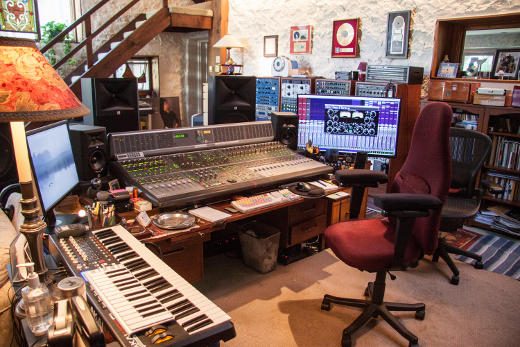
Pay close attention and you may be mixing in a sweet spot like Frank Filipetti’s — The Living Room. More on that later on… (Photo credit: Zach McNees)
Over the past decade, the technology for ITB mixing has grown immeasurably thanks to huge leaps in 64bit DAW technology and an ever expanding list of world class plugins. Once thought to be vastly inferior to analog console mixing, working ITB has arguably become the preferred way to mix for even the most seasoned veteran mixers.
For me, ITB mixing has always been about saturation and harmonics. That goes double (literally) on my mix bus. I will say that when it comes to the master fader, I am a creature of habit. Out of the five plugins that normally live on my mix bus, only a few things get tweaked regularly from song to song. The rest, are simply a reliable chain of gear that provide unique sonic enhancements that I mix through right from the start.
So what is my mix bus chain? See for yourself!
My personal mix bus chain:
Slate Virtual Console Collection
I love the VCC. It’s my first line of defense sonically and gain-stage wise for sculpting my tracks. I tend to use the different consoles on a channel-by-channel basis depending on the sound of the track. Some consoles like the Ψ (Trident) really push the top end crunch while others like RC Tube provide a very warm and rolled off sound. More on the VCC in my Sonicscoop Review.
The first listen to VTM on my mix bus was a huge WOW moment for me. VTM is doing some truly amazing things to the low end on my mixes for that really sub harmonic thump. I typically work in ½” 2 Track mode at 30 ips with FG9 tape type. Depending on the track I might work a little on the gain staging with the input and output knobs. I typically work at around 1.5 to 2dB of input gain on VTM.
Waves JJP Collection EQP-1A This is a very subtle top end boost. I tend to like the way the 12K boost sounds on the JJP Pultec more than most EQ plugins I’ve heard. It’s very musical sounding.
Slate Virtual Bus Compressors (typically the FG-RED)
This is the newest edition to my mix bus chain. Once again, spot-on replication of some truly classic hardware units. I just love how the FG-RED compressor glues my mixes together. I always mix through my compressor from the very start. My gain reduction VU meters in VBC rarely hits 3. I’m usually compressing very lightly on my mix bus to just help blend everything together nicely while retaining dynamics.
More on Ozone below.
Massey L2007 Used only in the reference phase for clients to provide a close to mastering level mix without doing anything damaging to the dynamics.
Of all the plugins on my mix bus currently, the one that provides by far the most sonic enhancement to my mixes is Izotope Ozone 5. My use of Ozone focuses primarily on EQ, Harmonic Exciter and Stereo Imaging modules. The harmonic exciter is in “Tube” mode crunching mostly the high and mid band with slight coloration in the low end. The same relative processing per band is used in the stereo imaging module to spread the high end and the mid range slightly adding a more exciting feel overall to the mix.
I’m a huge fan of Ozone. I really can’t mix without it these days. It adds so much to the overall sound of my mixes to glue everything together harmonically. I’m always a little terrified at what my mixes sound like when I bypass Ozone on the mix bus.
But enough from me! Let’s see how some of our veteran mixers are treating their master fader…
Nadim Issa
First up is Nadim Issa, producer/engineer extraordinaire and owner of one of my favorite studios in NYC, Let Em In Music in Gowanus Brooklyn. Nadim is currently working on the second full length for Lady Lamb the Beekeeper and just finished up producing and engineering the upcoming Pearl and the Beard album “Beast”. Other recent projects include Sophie Madeleine and Ingrid Michaelson and the spectacular debut album from Lady Lamb the Beekeeper.
Nadim is also a completely ITB mixer who works exclusively in Logic. A typical mix bus chain for Nadim looks something like:
UAD Ampex ATR-102 Mastering Tape Plugin
On mix bus technique: “For me, processing on the mix bus is about breathing a little more life into the mix, making sure it moves properly and has cohesion. I try not to leave too much to the imagination of the mastering engineer. If there’s anything I can think of that might make my mix sound better by processing the 2 bus, I will go ahead and try it.
As such, I might employ one or two layers of compression, EQ, stereo widening or narrowing, reverb, tape plugins, etc. I stop short at heavily limiting the bus. In fact I normally just use a Waves L2 plugin as a safeguard to avoid clipping the bus here and there. Occasionally, I’ll crank the L2 just to hear what that would sound like, but I don’t ever mix into it like that.”
On the mix bus chain: “The Brainworx bx digital EQ is a fairly new one for me. I find that a little tweaking goes a long way with this plugin. It is an extremely handy and multifaceted tool that I’ll often use to stereo enhance the mix thanks to its mid-side processing. I tend to be light-handed with my mix bus EQ-ing. I’ve always been conservative about brightening up my mixes, preferring to leave that up to the mastering engineer.
However, the high shelf on the bx digital is not at all harsh to my ears and as a result I’m comfortable doing some brightening myself. I’ll often brighten up my sides more than my mid. The ability to solo the mid, the sides, and whatever band your EQing is brilliant. I’ll play around with adding and cutting bands and based on what the bx reveals I find myself going back to EQ individual tracks as a result. The mono-maker knob, which makes everything below a designated frequency mono, can be nice for cleaning things up a bit and avoiding having bass-heaviness on either side. The de-esser is stellar as well when encountering some harshness.”
On Dynamics: “For compression, I often use UAD’s SSL G bus compressor plugin. I find it helpful to think of compression in terms of movement and rhythm. I like to visualize sounds pumping out of my speakers and how the sounds grow and shrink as a result of the compression and the attack/release settings being used. The compression should absolutely be musical and groove with the music.
I love the UAD SSL G because it’s versatile. I can coax the right feel and movement regardless of the material. To settle on the right compression ratio, attack and release settings, I’ll over-compress a mix so that the rhythm of the compression (again, what I call “movement”) is easily perceived and then I’ll back down on the threshold so that I’m typically compressing anywhere from 1-4 dB, with 4 dB being fairly aggressive for me. On very dynamic material, I’ll often use the SSL G plugin or the UAD 1176 Rev E plugin on a parallel bus in a more aggressive fashion. I find I get fuller-sounding mixes that way. I should also add that my compressor is on the mix bus very early on in the mixing stage. It definitely informs my mixing decisions.
The UAD Ampex ATR-102 is one of those intangibles for me. I like to try it on every mix. I’ll normally just adjust input/output levels and choose the 15ips setting but sometimes I’ll cycle through presets. More often than not, I’m pleased with what I hear and I stick with it. I must admit, I feel a little sheepish using it because it feels like I’m buying the snake oil, but damn it, somehow the mixes seem just a little fuller. The low end seems to become a little beefier while still being compact and the top end seems to be smoother. I can’t help it, this one ends up on the mix bus frequently.”
For the record, I couldn’t agree more with Nadim’s statement in regards to Tape Plugins. I always felt skeptical, but damn if they doesn’t do some amazing things on the mix bus! Thanks Nadim!
Paul “Willie Green” Womack
Next up we have Paul “Willie Green” Womack. Paul is a Brooklyn based hip-hop and R&B producer, engineer and mixer. Recent credits include Wiz Khalifa, Armand Hammer and Donnie McClurkin. Currently, Paul is working on new projects for singer-songwriter Barrie McLain, rapper Curly Castro and his own solo album called “Doc Savage”.
“I have a bit of a hybrid setup.” Paul explains, “I’m working in Cubase 7.5, mostly in the box (including summing) but also with a bunch of rack gear. I love old dbx compressors and weird distortion boxes. Plugins are great for all the regular needs, but when I’m looking for character, I tend to reach for a real knob”.
On the mix bus chain: “Every mix I’ve done in my studio in the past year has had Waves NLS (console emulation) and an ART Pro VLA II (compressor) on the mix bus. I’m currently in love with the “Spike” API setting on NLS. It has a great midrange and really pushes things forward. I love the low end of the “Mike” (TG/EMI) console, I use it on drums a lot. The trim tool (in NLS) is really convenient for controlling the mix level before it hits my bus compressor. I also use the drive feature a good deal, usually on the more subtle side, but I mix a lot of aggressive music so sometimes I’ll crank it a little bit.
The Pro VLA II may not be an expensive boutique piece, but the feature set and performance is unmatched at this price point.” EQ wise, Paul rarely if ever uses EQ on the whole mix. “I feel like I lose perspective of my tracks and wind up throwing off everything I’ve done” he says.
On mix bus technique: “I tend to compress a lot within my mix, so by the time I hit my mix bus compressor I’m just barely tapping it. I keep my threshold high and my ratio low and really just use it to glue things together. The biggest key to compressing your mix is to mix into the compressor from the beginning of the mix. If you try to add it later on it can really screw up your balance. Also it helps to listen quietly when adjusting. If your mix is blaring it’s really tough to tell if you’re over-compressing or if it’s just your ears telling you to turn down!”
Great advice, thanks Paul!
Frank Filipetti
Finally and certainly not least, I spoke with six-time Grammy winner Frank Filipetti at his facility The Living Room is West Nyack, NY.
Frank’s work includes some of the best and most diverse artists in music with a discography that ranges from Dolly Parton to Korn and everything in between. Past work includes Carly Simon, Elton John, Billy Joel, Foreigner, Madonna, Paul McCartney and James Taylor whose “Hourglass” album won Filipetti two Grammys in 1998 for Best Engineered album and Best Pop Album. More recent work includes the gorgeous Steve Martin and Edie Brickell album “Love Has Come for You” and the upcoming live recording of Frank Zappa’s 200 Motels recorded at the Walt Disney Concert Hall in LA which Frank produced and is currently mixing.
Frank is credited with being one of the early adopters of digital audio technology. These days, although his studio is filled with the choicest pieces of analog gear which are still a huge part of the tracking process, as far as mixing is concerned his setup is 100% in the box.
“The new Neve emulations from UAD are so good, I don’t even go out there (to the racks)” Frank says. “I have more chances of crackles, pops, all kinds of issues.” As we explored the track layouts in various sessions of pop, rock and orchestral live recordings, it’s clear that Frank is still a huge fan of the “old school” gear like the LA-2A, Neve modules, AMS-RMX, the MXR blue and many others…but all in plugin form!
Frank is working in Pro Tools 11 HDX with the DCommand console at the helm. Under the hood, his mix sessions are set up and printed at 32bit float.
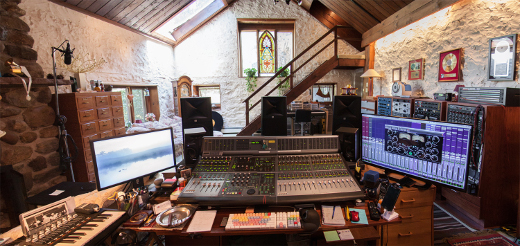
Here’s where Filipetti gets his perspective — The Living Room, in West Nyack, NY. (Photo credit: Zach McNees)
On gain staging: “I keep all my mix buses reasonably comfortable (level wise). Part of the issue for me is sorting out the gain staging. Every time you use parallel processing you’re adding 6dB to the signal, so you gotta be careful about what’s at zero and what’s not at zero. At 32 bit, I don’t have to worry about it (the headroom) as much”.
The layout of a typical mix for Frank includes a great deal of sub-bussing tracks. That is, drums, vocals, guitars etc. all get grouped into aux return busses. Those busses in turn feed up to six sub-mix busses which all process in parallel with each other to the final master fader.
As a disclaimer for his in-depth explanation of his mix bus chain, Frank explained: “I’ve always had a mindset that knowing what someone does is not nearly as important as why they do it. One size does not fit all. Engineering is as much an art as a science and as you know, art is mESsY (Frank’s slogan).” So, with that in mind…
On the parallel sub-mix busses:
“TRASH bus: I use either the Devil Loc Deluxe, the McDSP Futzbox, or the UAD Thermionic Culture Vulture (which despite being amazing is a bit of a resource hog).
The CMP (compression) bus: I use Waves Bass Rider for riding the gain into the compressor followed by the McDSP Channel G EQ into the UAD Fairchild 670. The parallel compression bus typically gets smashed a good deal with the 670.
SMX: (main stereo sub) A touch of incredibly delicate limiting with the Sonnox limiter (more for safety than sound), into the Waves J37 (if needed) followed by a touch of UAD Pultec (top end). I used to use the Slate VTM, but the 64 bit version doesn’t sound quite as good to me as the older 32 bit.”
SMX2: (main stereo 2) I use the UAD K-Stereo to boost the ambience (again, if needed) and add a bit of widening using the m/s portion of the device. Finally, this gets a dose of the Sonnox Inflator. This is the most “processed” of the busses and is used, hopefully, discreetly.
Finally, I have two delay busses. These are usually a delay and a reverb. The delay is most often the UAD Cooper Time Cube and the reverb is any very short, very tight room simulation to add to the overall mix. These last two are feed via sends. The delays work great for band and strings, but not so much for vocals and drums.
These busses are all in parallel and thank heavens for the new Pro Tools 64 bit mix engine. The delay compensation is spot on.”
On the final mix busses:
“The MixM Bus is strictly for the artist. It’s a pumped up version of the mix. So I use a compressor like the UAD 33609, or LA2A for some final mix compression and the UAD Precision Maximizer for level…usually about 3db of gain.
Mix Bus is my final “mix” stage and what is sent to mastering. Here, I add whatever color I’m missing to the overall mix. For this I rely on the UAD Shadow Hills Compressor. This is a thing of beauty. Using the Iron, Nickle, and Steel buttons can totally change the sonic splendor of the mix. That is usually followed by the iZotope Ozone 5. Here I add EQ, multi-band compression and occasionally, harmonic content. This is followed by the Sonnox Dynamics where any final limiting or side-chaining is done. I’ve also just received the new UAD Elysian MPressor and if initial trials bear out, this will definitely find its way to my mix bus.”
On compression and dynamics: “I’m trying not to compress the mix. I like to have dynamic range. If I need to slay it, what I generally do is just bring up the compressor bus. If later on, the mastering engineer needs to compress it, go ahead!”.
Frank’s mixing techniques in the box were fascinating for me to see as they’re quite different than my own workflow in terms of plugin use and sub-mixing. It’s great to see so many different engineers using the DAW in a myriad of different ways across many different genres of music — achieving such great results in the box!
Clearly, every mixer has a unique way of working when it comes to the mix bus. As Frank mentioned, it’s important to understand not so much what an engineer is using, but why they’re using it! Take some of these great ideas and try to assimilate them into your own mixes in a way that best suits how you work!
My thanks to Nadim, Paul and Frank for being fantastic participants in our GO TO mix bus breakdown!
Zach McNees is a Brooklyn-based producer/engineer/mixer and live recordist who’s worked with Björk, Rob Thomas, Julia Nunes, The Gregory Brothers, Pixies, Liars and Alice Cooper. Get in touch with Zach via http://www.zachmcnees.com.
For more great insights into both mixing and mastering, try our full-length courses with SonicScoop editor Justin Colletti, Mixing Breakthroughs and Mastering Demystified.


Please note: When you buy products through links on this page, we may earn an affiliate commission.







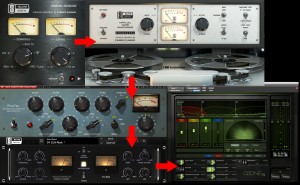
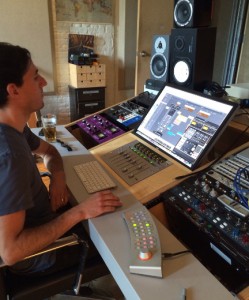
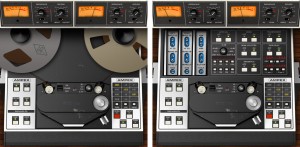
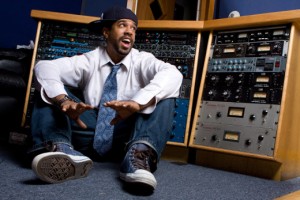

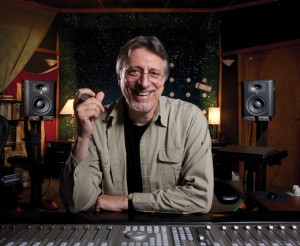
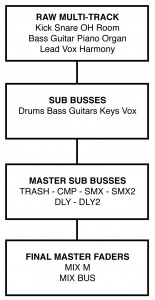
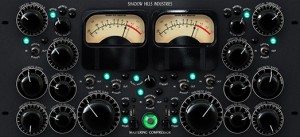
DPrty
October 6, 2014 at 6:04 pm (10 years ago)Great article. More like this one please.
Zach McNees
October 6, 2014 at 8:02 pm (10 years ago)Thank you! I’m always open to suggestions on future GO TO ideas!
Glenn Brown
October 9, 2014 at 4:12 pm (10 years ago)NLS Spike is a SSL4000G and not a API but is right about the flat respons as compared to the EMI and Neve……
ex3
October 11, 2014 at 10:57 am (10 years ago)The Waves NLS is on sale right now too for $99. Here’s a coupon link for an extra 10% off too! http://refer.waves.com/bi5lS
Bones Howell
November 23, 2014 at 11:05 pm (10 years ago)I would have liked to see more discussion with mixers who work completely out of the box when it comes to 2 buss. kind of depressing to see how many pro engineers are using a bunch of plug ins.
VictorSpoilz
July 8, 2015 at 4:55 pm (10 years ago)Great article, thanks. Food for thought. The moral of the story is: do what works for you but tread lightly is always a good watchword.
Joshua Lutz
April 21, 2017 at 4:07 am (8 years ago)great article! Thx guys
Robert Jason
May 11, 2017 at 6:09 pm (8 years ago)Just curious as to why you’d insert VTM so early in the chain, when logically your print to tape would be the last operation…post all but any Limiting.
Truly, I do a MIX with just VCC and VTM, dither to 24 bits, leave at 96 k. That rendered export is then imported for the Mastering process. Different strokes, I guess.
Judas Sleaze
May 22, 2017 at 11:34 am (8 years ago)It wouldn’t be the last operation, if you’re mixing a session tracked to tape then it’s already there!